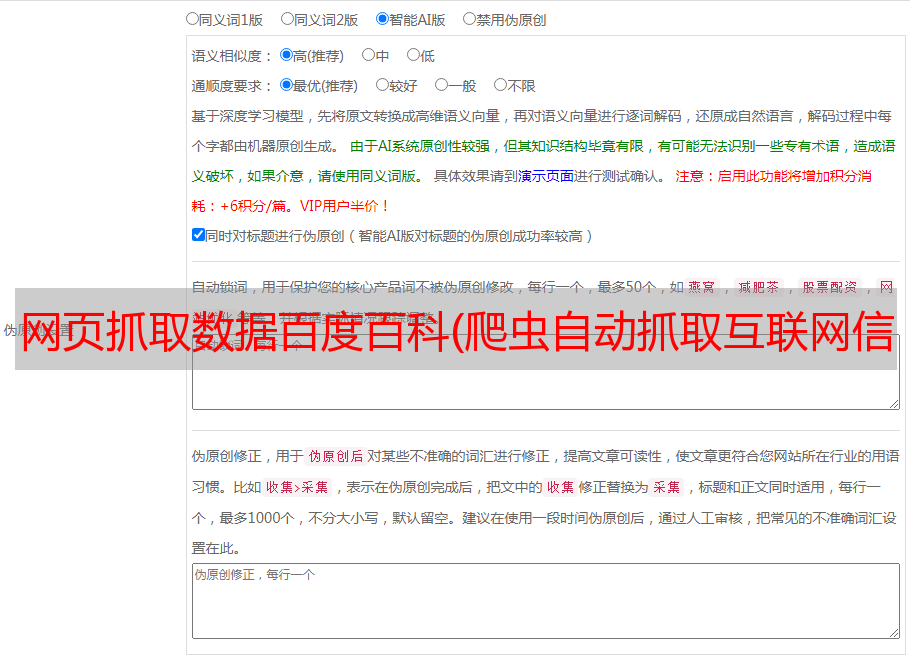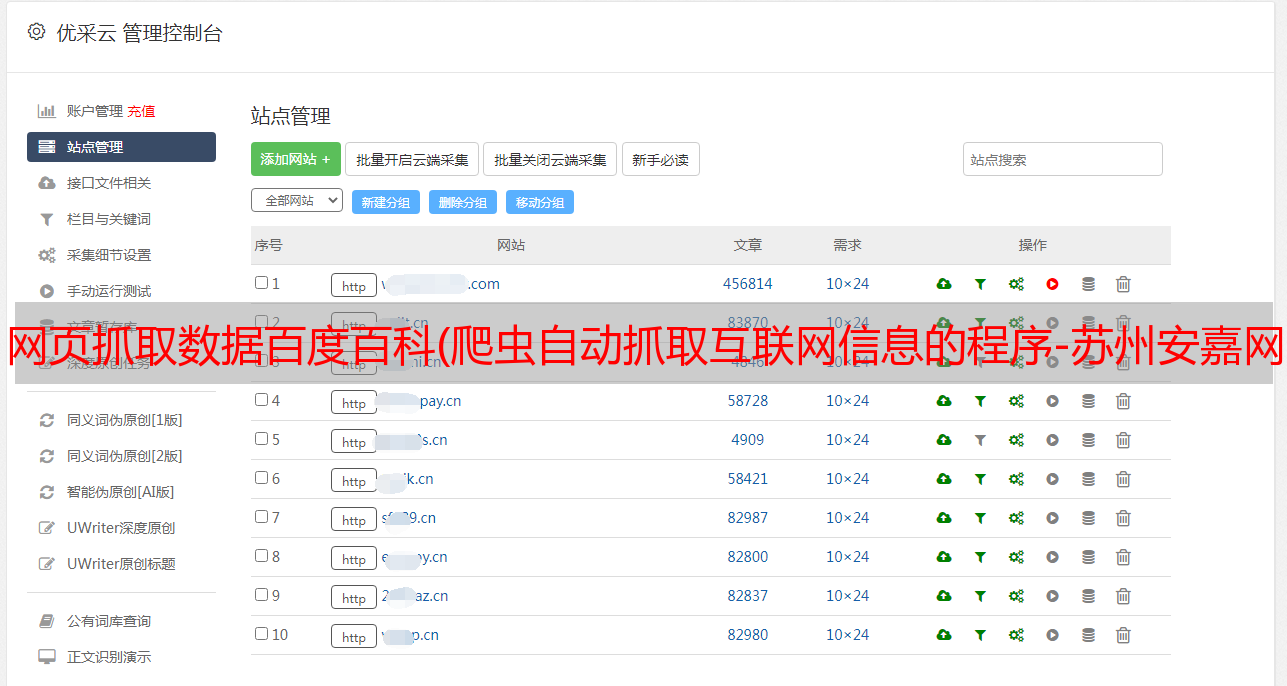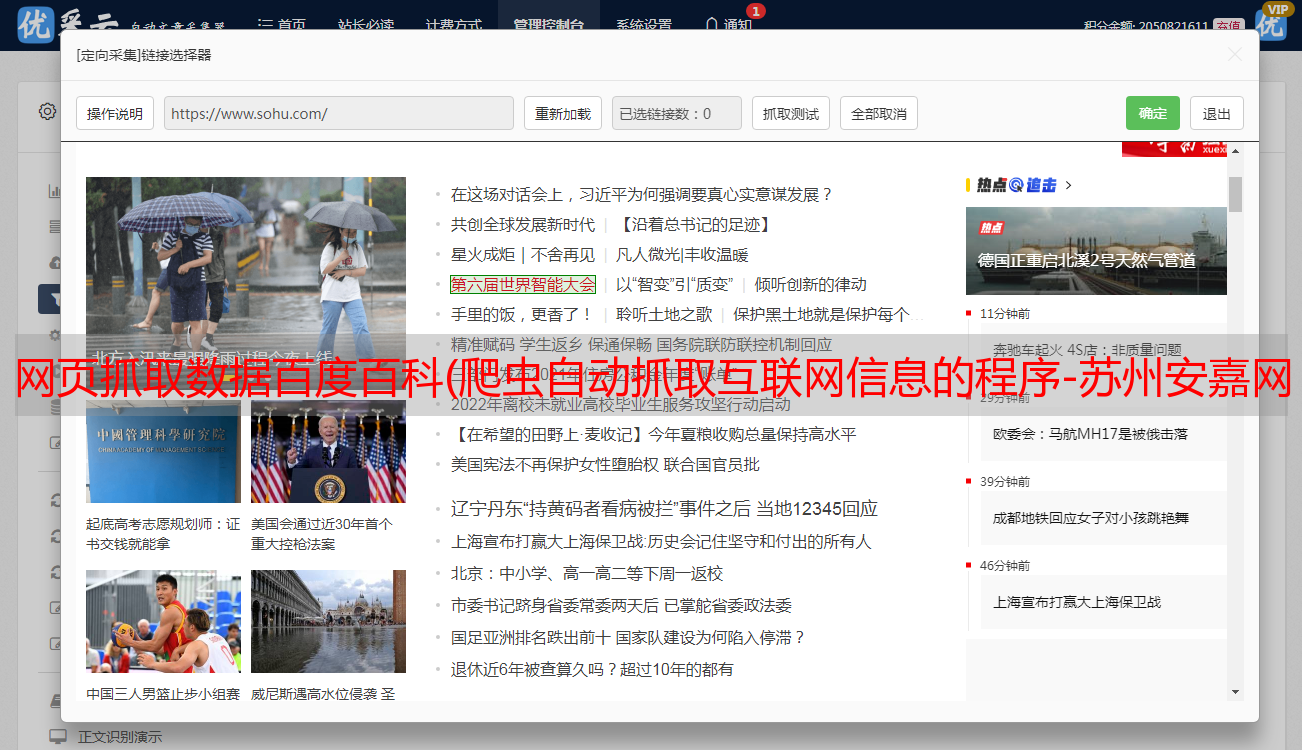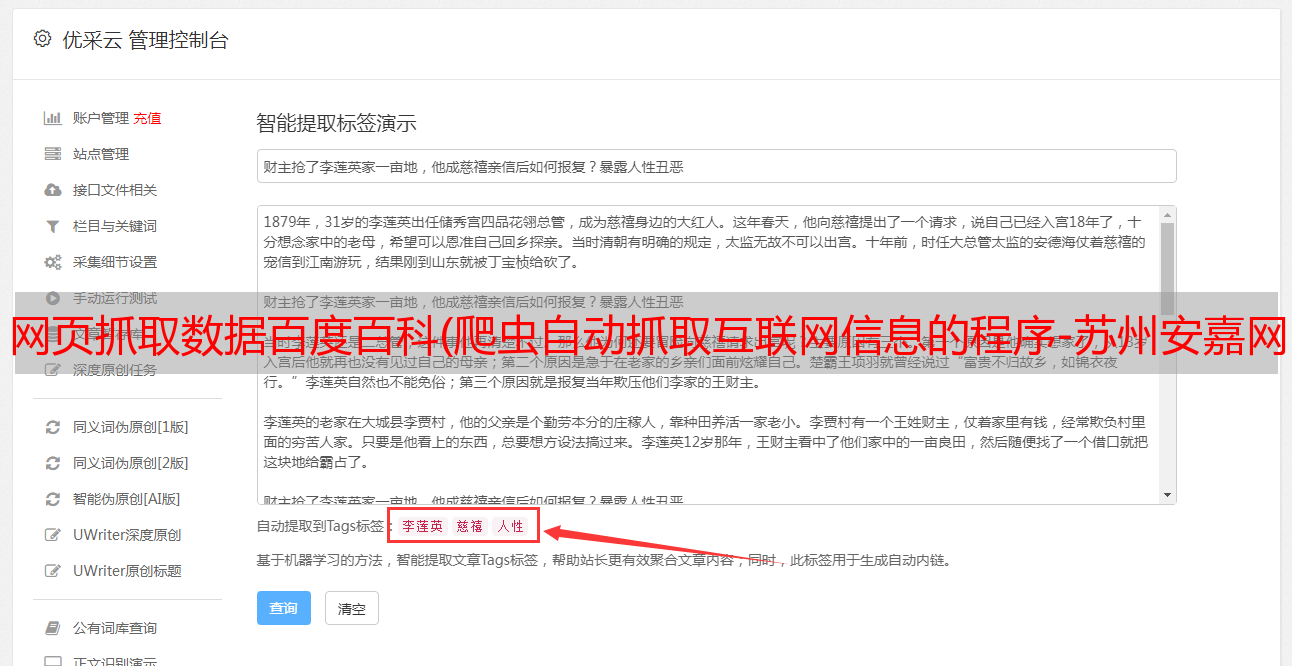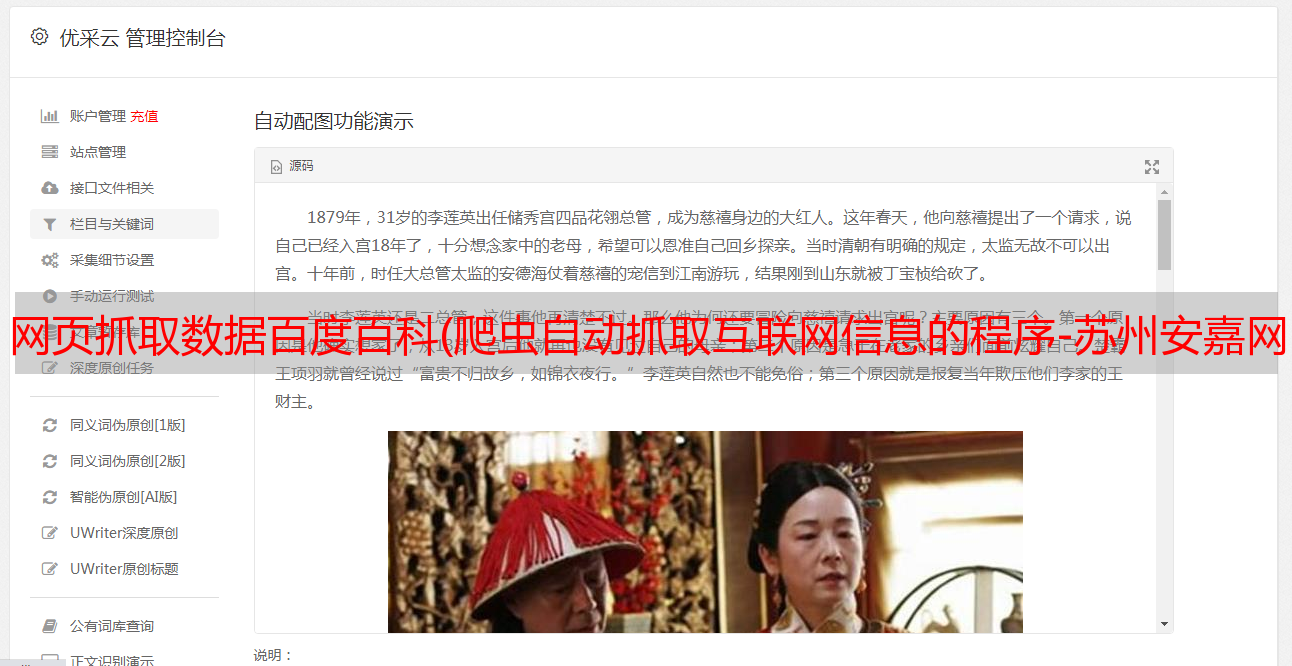网页抓取数据百度百科(爬虫自动抓取互联网信息的程序-苏州安嘉网络 )
优采云 发布时间: 2021-11-08 19:03网页抓取数据百度百科(爬虫自动抓取互联网信息的程序-苏州安嘉网络
)
爬虫是一种自动从互联网上抓取信息的程序。通常,少量信息是从互联网上手动获取的。爬虫可以从一个 URL 开始,访问与之关联的 URL,并从每个页面获取有价值的数据。
这是一款轻量级(无需登录和异步加载静态网页抓取)开发的网络爬虫,用python语言编写,主要包括URL管理器、网页下载器(urllib2)、网页解析器(BeautifulSoup)),以实现百度百科爬虫入口相关的N个(自行设置)页面数据。简单爬虫的结构如下:
简单的爬虫架构流程如下:
程序根据架构分为以下五个主要的py文件:
主要的调度文件是spider_main.py
#coding:utf8
import html_outputer
import html_parser
import url_manager
import html_downloader
class SpiderMain(object):
def __init__(self):
self.urls = url_manager.UrlManager()
self.downloader = html_downloader.HtnlDownloader()
self.parser = html_parser.HtmlParser()
self.outputer = html_outputer.HtmlOutputer()
def craw(self, root_url):
count = 1
self.urls.add_new_url(root_url)
while self.urls.has_new_url():
try:
new_url = self.urls.get_new_url()
print 'craw %d :%s' % (count, new_url)
html_cont = self.downloader.download(new_url)
new_urls, new_data = self.parser.parse(new_url, html_cont)
self.urls.add_new_urls(new_urls)
self.outputer.collect_data(new_data)
if count == 10:
break
count = count + 1
except:
print 'craw failed'
self.outputer.output_html()
if __name__ == "__main__":
root_url = "http://baike.baidu.com/item/%E7%BD%91%E7%BB%9C%E7%88%AC%E8%99%AB"
obj_spider = SpiderMain()
obj_spider.craw(root_url)
URL 管理器 url_manager.py
#coding:utf8
class UrlManager(object):
def __init__(self):
self.new_urls = set()
self.old_urls = set()
def add_new_url(self, url):
if url is None:
return
if url not in self.new_urls and url not in self.old_urls:
self.new_urls.add(url)
def add_new_urls(self, urls):
if urls is None or len(urls) == 0:
return
for url in urls:
self.add_new_url(url)
def has_new_url(self):
return len(self.new_urls)!=0
def get_new_url(self):
new_url = self.new_urls.pop()
self.old_urls.add(new_url)
return new_url
htmldownloaderhtml_downloader.py
#coding:utf8
import urllib2
class HtnlDownloader(object):
def download(self, url):
if url is None:
return None
response = urllib2.urlopen(url)
if response.getcode()!=200:
return
return response.read()
html 解析器 html_parser.py
# coding:utf8
from bs4 import BeautifulSoup
import re
import urlparse
class HtmlParser(object):
def _get_new_urls(self, page_url, soup):
new_urls = set()
links = soup.find_all('a', href=re.compile(r"/item/"))
for link in links:
new_url = link['href']
new_full_url = urlparse.urljoin(page_url, new_url)
new_urls.add(new_full_url)
return new_urls
def _get_new_data(self, page_url, soup):
res_data = {}
res_data['url'] = page_url
#Python
title_node = soup.find('dd',class_="lemmaWgt-lemmaTitle-title").find("h1")
res_data['title'] = title_node.get_text()
#
para_node = soup.find('div',class_="para")
res_data['para'] = para_node.get_text()
return res_data
def parse(self, page_url, html_cont):
if page_url is None or html_cont is None:
return
soup = BeautifulSoup(html_cont, 'html.parser', from_encoding='utf-8')
new_urls = self._get_new_urls(page_url, soup)
new_data = self._get_new_data(page_url, soup)
return new_urls, new_data
html 输出器 html_outputer.py
#coding:utf8
class HtmlOutputer(object):
def __init__(self):
self.datas = []
def collect_data(self,data):
if data is None:
return
self.datas.append(data)
def output_html(self):
fout = open('output.html','w')
fout.write("")
fout.write("")
fout.write("")
#ascii
for data in self.datas:
fout.write("")
fout.write("%s"%data['url'])
fout.write("%s"%data['title'].encode('utf-8'))
fout.write("%s"%data['para'].encode('utf-8'))
fout.write("")
fout.write("")
fout.write("")
fout.write("")
fout.close()
爬取的结果:
